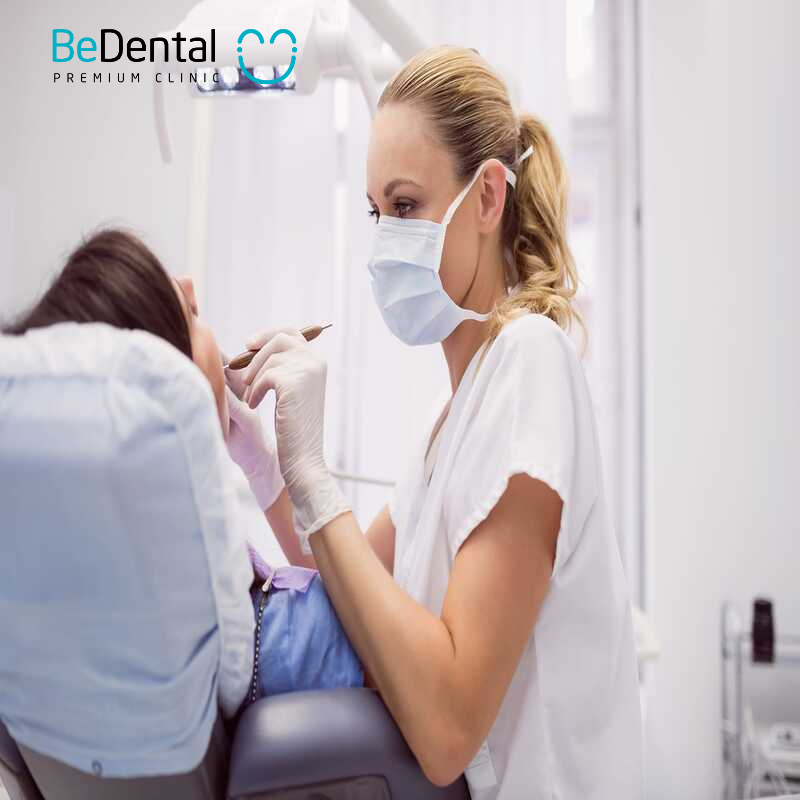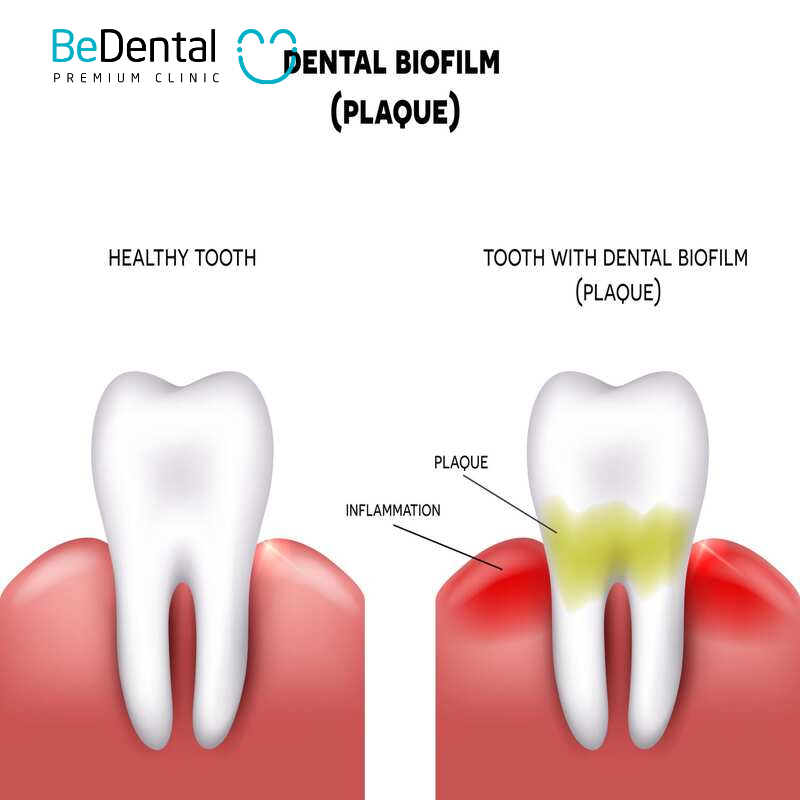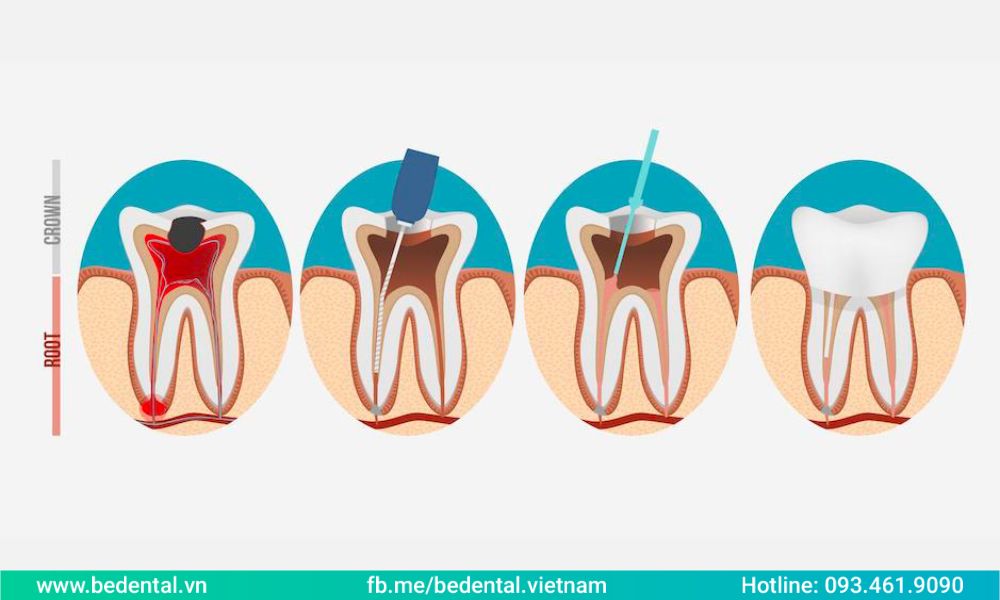Did you know that almost 90% of cavities and gum disease are caused by plaque buildup on your teeth? In just 24-72 hours, a thin layer of plaque can lead to serious problems like gingivitis, periodontitis, and even tooth loss. Brushing twice a day and visiting your dentist regularly can help prevent these risks. Follow us with this article: Tartar removal Effective methods and post cleaning care tips.
What is Tartar and What to Keep in Mind When Removing It
Tartar is hardened plaque that sticks to your teeth, causing various oral health issues like cavities, gum inflammation, and bad breath. After removing tartar, proper oral care is crucial to prevent its return. You should follow tartar removal effective methods below.
Special Care in the First Few Days After Tartar Removal
In the days following tartar removal, it’s important to avoid food that’s too hot, cold, or acidic, and limit sweets and carbonated drinks. Regular dental check-ups every six months are also essential to maintain long-term oral health. If you experience prolonged pain, inflammation, or bleeding after tartar removal, contact your dentist for a timely examination and treatment.

Removing tartar not only helps protect your oral health but also prevents dangerous conditions. Tartar removal effective methods in 2016 research and regular dental visits are key to preventing tartar buildup and maintaining a healthy, bright smile.
Tartar removal Effective Methods
There are currently three popular methods for removing tartar. The traditional method involves using manual dental tools to scrape away tartar, which may cause some discomfort and requires skillful handling by the dentist. A more modern approach is using an ultrasonic scaler, which gently removes tartar with less pain. Additionally, advanced laser technology is used for deep tartar under the gums, offering effective results while minimizing discomfort.
Manual Scaling- tartar removal effective methods
One of traditional tartar removal effective methods uses dental instruments to scrape off hardened plaque from the tooth surface. Manual scaling (Ultrasonic Vs Manual scaling: Which would you prefer) requires a high level of skill and can cause discomfort, especially for those with low pain tolerance.
- Advantages: Low cost, suitable for mild tartar cases, widely available.
- Disadvantages: Can cause sensitivity, doesn’t fully address tartar below the gumline, and takes longer.
Ultrasonic Scaling
This method uses ultrasonic waves to break down tartar without direct contact, making it more comfortable for patients compared to manual scaling. It is effective on both tooth surfaces and deep tartar under the gums.
- Advantages: Quick, less painful, minimally invasive, reduces post-treatment sensitivity.
- Disadvantages: Higher cost compared to manual scaling.
Laser Tartar Removal
Laser technology is one of the most advanced tartar removal effective methods, particularly deep tartar beneath the gums. It not only reduces pain but also minimizes bleeding and swelling after the procedure.
- Advantages: High effectiveness, minimal pain, less bleeding, ideal for severe tartar buildup deep below the gums.
- Disadvantages: Expensive, requires modern equipment, not widely available in all dental clinics.

Choosing the right method depends on each individual’s oral health condition. For mild tartar cases, manual or ultrasonic scaling is appropriate. However, for deep tartar removal or more thorough cleaning, laser treatment provides the best results.
Post-Treatment Care Tips for Tartar Removal
After tartar removal, maintaining daily oral hygiene is critical. Brush at least twice a day with fluoride toothpaste to protect your enamel and prevent cavities. Additionally, flossing is essential to thoroughly clean between teeth, where a toothbrush cannot reach, helping to remove plaque and prevent tartar from reforming.
Dietary Habits
In the first few days after tartar removal, avoid consuming foods that are too hot, cold, or acidic to prevent irritation of your teeth and gums. Limiting sugary foods and carbonated drinks is important since they can increase the risk of cavities and plaque buildup.
Routine Dental Checkups
Regular dental visits are an effective preventive measure to help maintain long-term oral health. It’s recommended to visit your dentist every six months for a checkup and tartar cleaning if necessary, as well as to detect potential issues like gum inflammation or cavities.

Symptoms to Watch for After Tartar Removal
If you notice symptoms such as prolonged inflammation, pain, or excessive bleeding after tartar removal, contact your dentist immediately. These symptoms could indicate gum damage or infection, which should be addressed promptly to avoid complications.
Tartar removal effective methods in Vietnam
In summary, tartar is a common oral health issue that can be effectively controlled and removed with modern treatments like manual scaling, ultrasonic scaling, and laser technology. However, maintaining proper oral hygiene after tartar removal is key to preventing plaque from forming again. By practicing good oral care and scheduling regular dental checkups, you can protect your oral health and keep your smile bright and confident.
In Vietnam, addressing tartar buildup has become more accessible with advancements in dental care. Bedental, one of the country’s leading dental clinics, offers a wide range of effective treatments to combat tartar and maintain oral health. Using state-of-the-art technology and professional dental care techniques, Bedental specializes in tartar removal, including scaling and polishing procedures that ensure thorough cleaning of the teeth and gums. Regular dental check-ups and cleanings at Bedental are essential to prevent tartar buildup and promote long-term oral hygiene.
For those seeking further consultation regarding dental examination services, please visit BeDental’s locations in Hanoi or Ho Chi Minh City. You can also reach us at our hotline: (+84) 934.61.9090 / (+84) 899.555.636 or through our Facebook page, BeDental, for prompt and accurate assistance.



